When is a mountain not a mountain? When the mountaineering community says so, of course! Dantes Peak or “Dante’s BM” as it is known in the climbing community will never confuse anyone with Mt. Everest. For starters, at over 29,000 feet, Mt. Everest is the prime diamond jewel in the climber’s crown. At 5,704 feet, Dantes Peak is more like a climber’s emerald toe ring. There’s also the unfortunate fact that Dantes Peak is over four times smaller than Everest, and over two times smaller than Mt. Whitney. Heck, even its neighbor – Telescope Peak – is almost twice as big as it at 11,049 feet. But you know what? Not everyone gets to climb Mt. Everest, and not every mountain has to be Mt. Everest. Sometimes, things should just be enjoyed for what they are. And, for what it is, Dantes Peak is a great beginner’s hike with great views of Death Valley from the Black Mountains.
The Salt/Saline Pools of the Devil’s Golf Course
The Devil's Golf Course is an area of Death Valley that is close to Badwater. While it is not quite as far below sea level as Badwater, this is an area that is also below sea level. But like Badwater, it shares a common geologic past. Over twenty thousand years ago, the valley floor of Death Valley was not barren and desolate - but instead was covered with water - a large body of water known to geologists and historians as Lake Manly. Lake Manly was full of minerals from the surrounding terrain; and over the course of time, as it evaporated, it left those minerals - and sedimentary rocks behind. Today, what remains are salt crystals from the bottom of the lake - and borax crystal formations. These crystals have grown into an extensive – and hard network of structures. As you can see from the pictures above, the crystal formations have covered the area in a network of sharp formations that are between one to two feet high and are close together. As the area is difficult to traverse on foot, one can only imagine the difficulty one would have attempting to play any sort of golf game (hence the name). While the crystals are spectacular, where myth and fact meet are with the secret pools of water that remain interspersed among the formations.
Salt Creek Interpretive Trail
If you’re like me, and you spent any amount of time in California in the 1990’s, chances are you saw two bumper stickers: “Keep Tahoe Blue”; or “Save the Pupfish”. Sadly, I don’t see as many Pupfish bumper stickers today as I used to, but perhaps that’s because most people don’t know where the pupfish are or what they are. There’s no reason to despair though – a visit to the Salt Creek Interpretive Trail will clear up the salient facts about Pupfish, but may provide you with other mysteries of the science fiction variety.
Golden Canyon to Zabriskie Point
There’s a lot of hikes in the National Park system that get a lot of press as the “best hikes”. And, when I say “press”, I am not just talking about articles written by journalists and bloggers. I am talking about word-of-mouth hikes that are discussed between hikers and non-hikers; discussions that percolate world-wide about places that should be seen or, in some cases, depending on who is talking, have to be seen. A lot of these hikes deserve the reputation and the discussion that they get; and a lot of these hikes don’t deserve the reputation that they get. I’m not going to weigh in about which hike deserves what as it’s a matter of personal opinion in my book. What I will say, is that the best secret hike in the National Park system is the hike(s) I’m talking about here and last week: Golden Canyon.
Golden Canyon to Red Cathedral
It should surprise no one that I am a child of the latter half of the twentieth century. As one, I listened to a lot of one-hit wonders. Now that I’ve made myself sound like my father: “You know what was great in 1962? Wilt Chamberlain”, I’ll get to the point. The point is this – in 1997, there was this song. It started with a little high hat, and then it had a repetitive five chord introduction, and since that could be any song, I’ll tell you what it was: it was Smashmouth’s Walkin’ on the Sun. I’m not sure what’s more embarrassing; that I’ve had this long lead in about how I used to listen to Smashmouth, or that whenever I think of the song, Walkin’on the Sun, I can’t even get the lyrics right, and I always think the lyrics are “You might as well be walking on the moon”.But let’s be honest here – sun, moon – who’s keeping score? Whenever I go to Golden Canyon, this is the song I think of because I associate it with being on the moon (not sun), and that lunar type of terrain is exactly what you will see from the moment you enter Golden Canyon.
Scotty's Castle
There are three great historic mansions in California that are full of ghosts. There’s the Winchester House, which is full of actual ghosts. Then there’s the Hearst Castle, which is full of the ghosts of history, old Hollywood, print news, and dare I say it, Rosebud. Last, but not least, there’s Scotty’s Castle, which is full of ghosts of old stories. Out of the three, Scotty’s Castle is the most remote, as it is in the far Northern corner of Death Valley National Park, miles and miles away from cities, towns, and civilization. Despite its remote location, Scotty’s Castle holds its own as one of the big three, and depending on your perspective, may even be the most interesting, beautiful, and compelling.
Ubehebe Crater
Ubehebe Crater
In my opinion, there are two types of people in the world: those that will walk down into a potentially active volcanic crater, and those that will not climb down into a potentially active volcanic crater, and instead, prefer to watch the first group from the volcanic crater’s rim. I suppose I’d be even willing to say that there’s even a third class of people, those that want to be nowhere near a potentially active volcanic crater, but they’re probably not reading this article, except as a cautionary tale of what to stay away from, so we won’t worry about them today. If you’re a member of one of the first two classes of people, and you’re in Death Valley, you’re in luck: the Ubehebe Crater is available for those who like to stand on the rim and watch, and it is available for those who like to hike. And, if you are of that third class of people that avoids volcanoes, now you know not to go to the northern portion of Death Valley National Park.
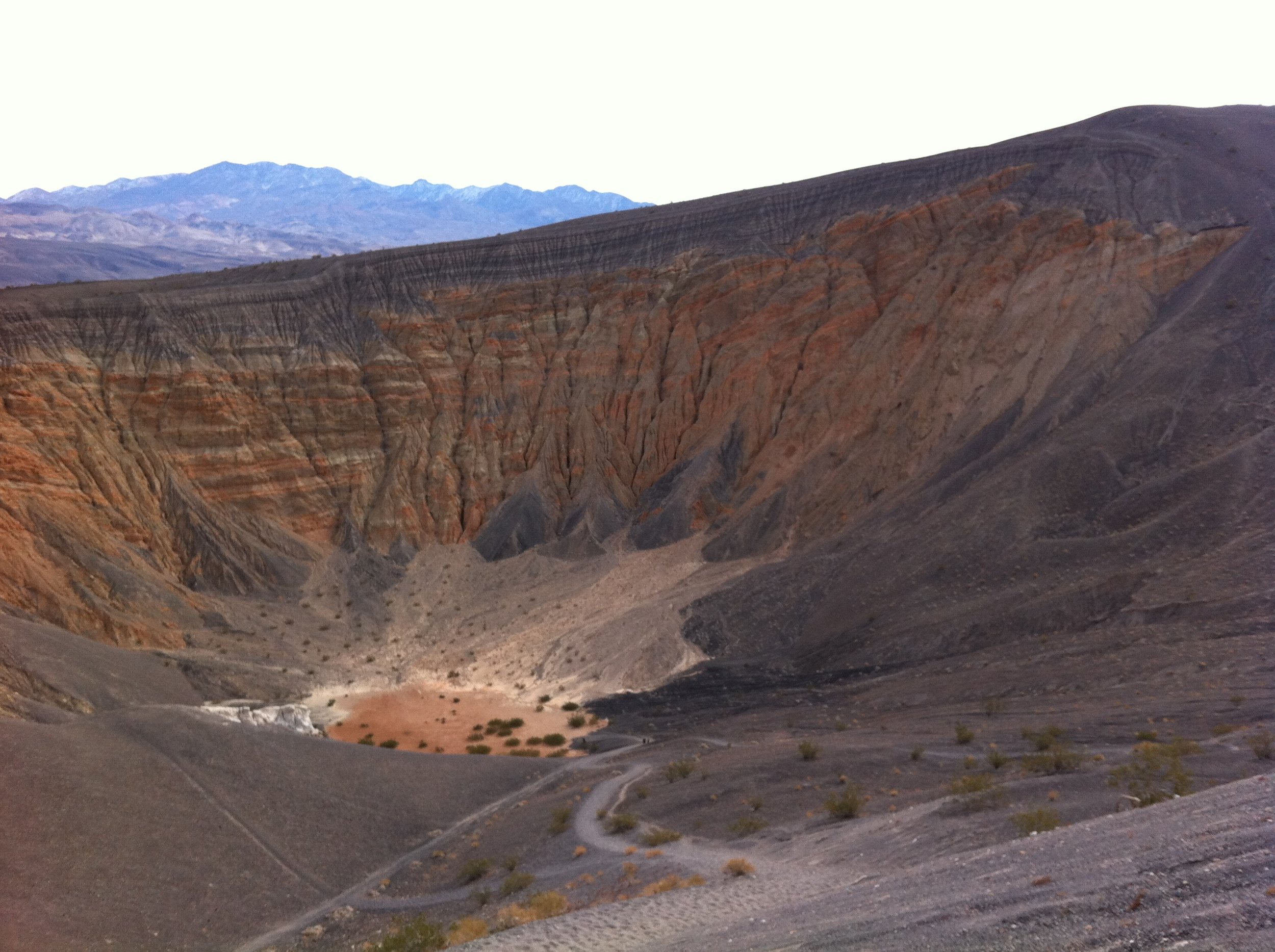

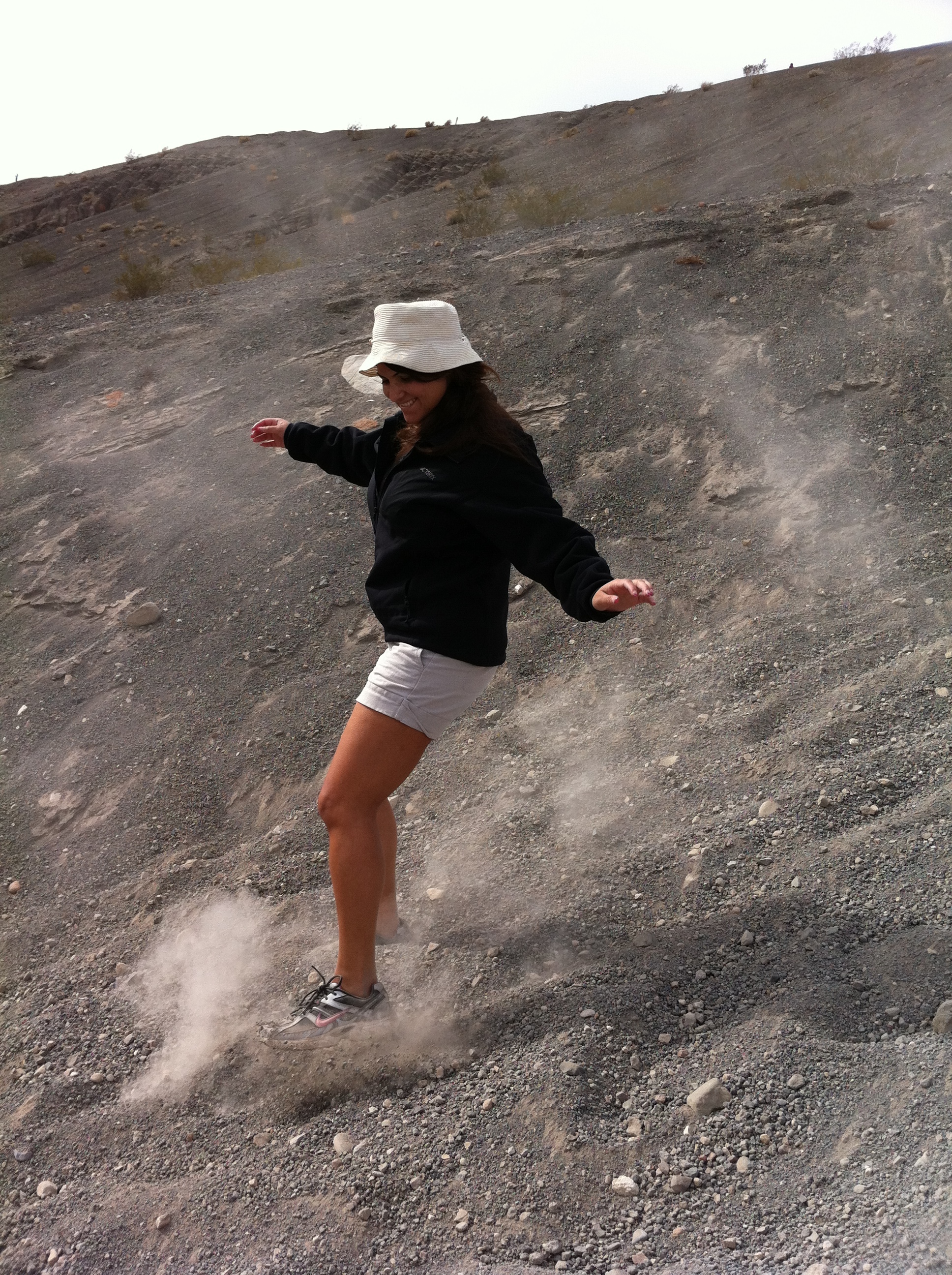
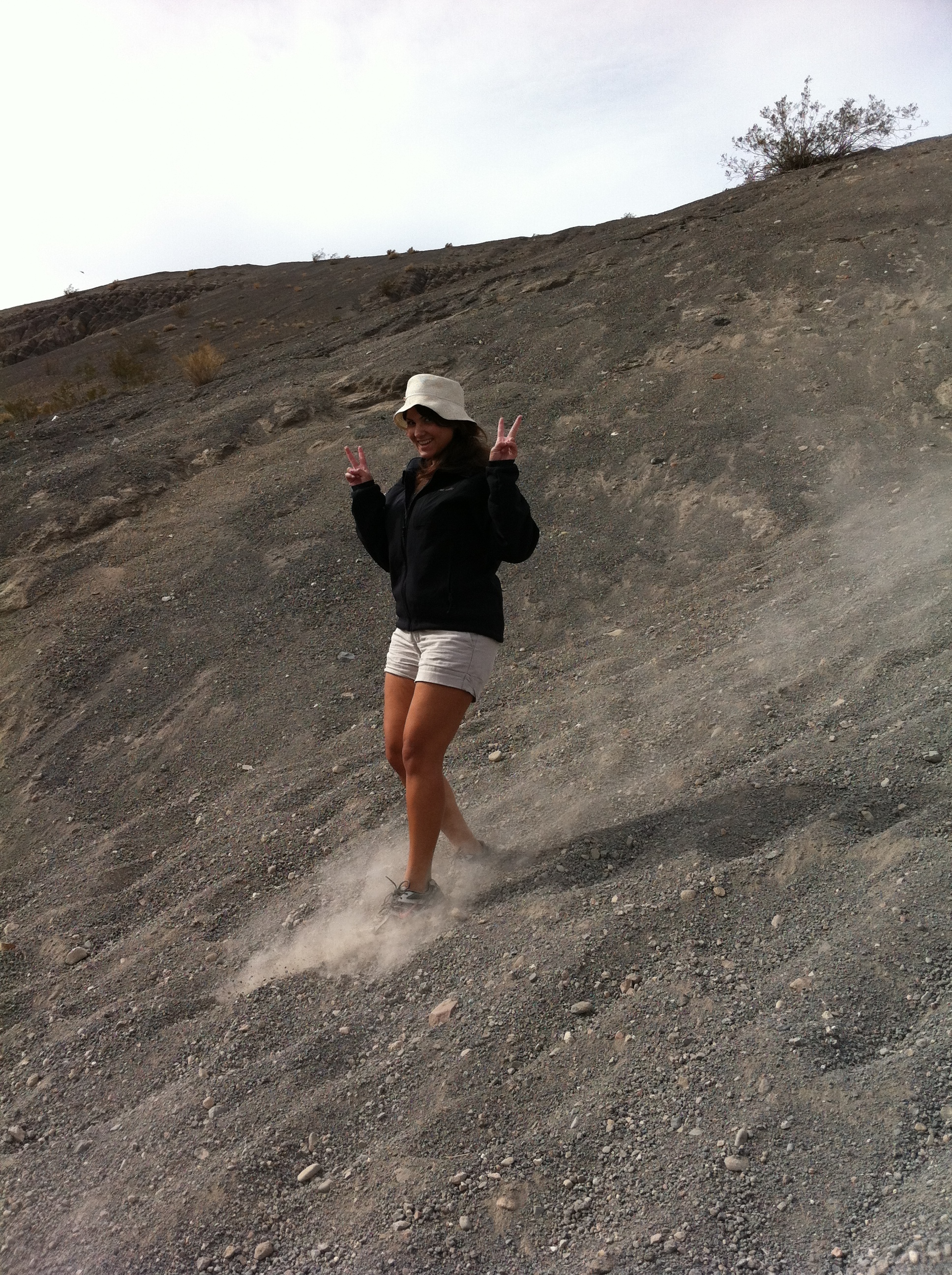
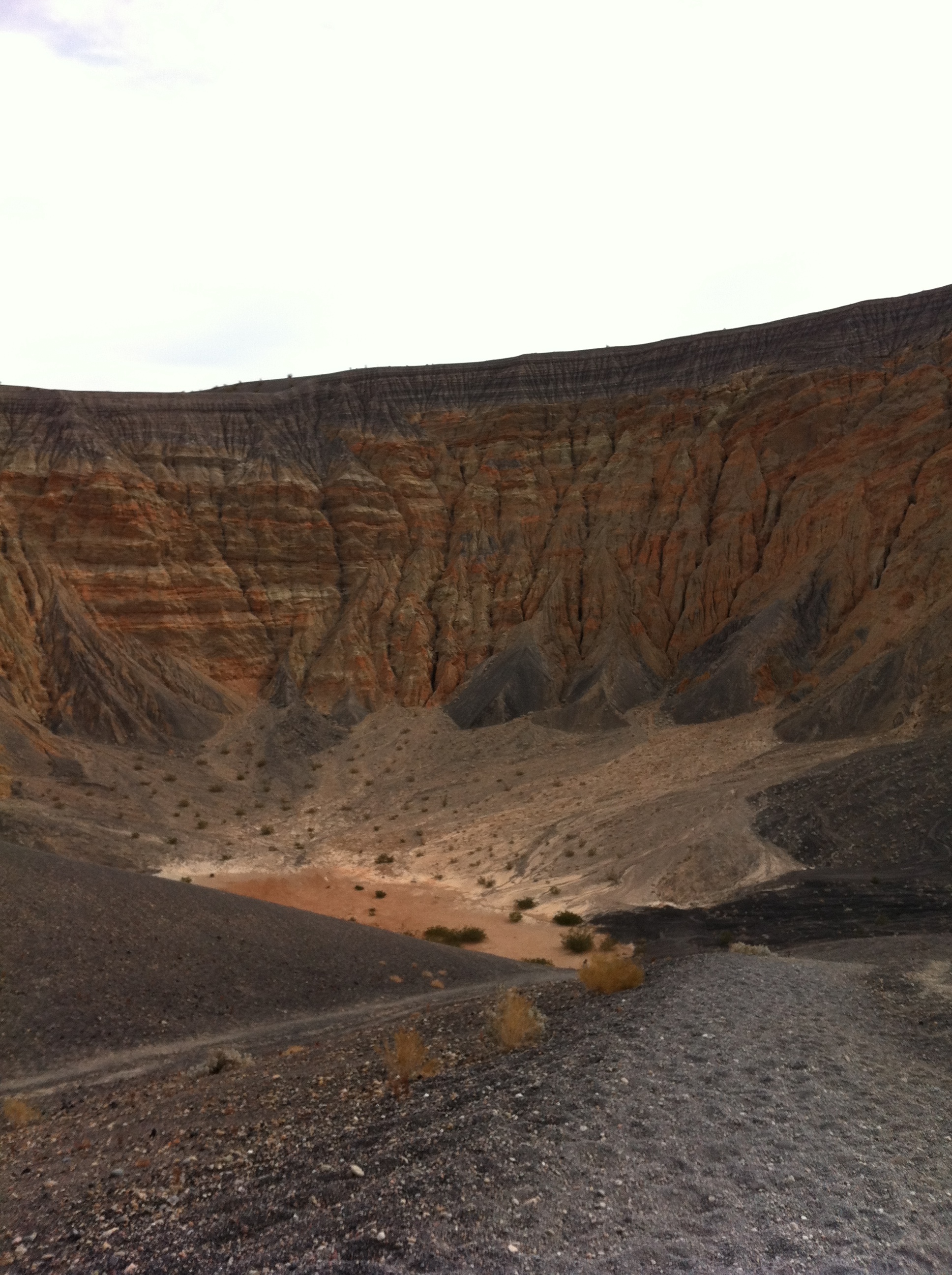
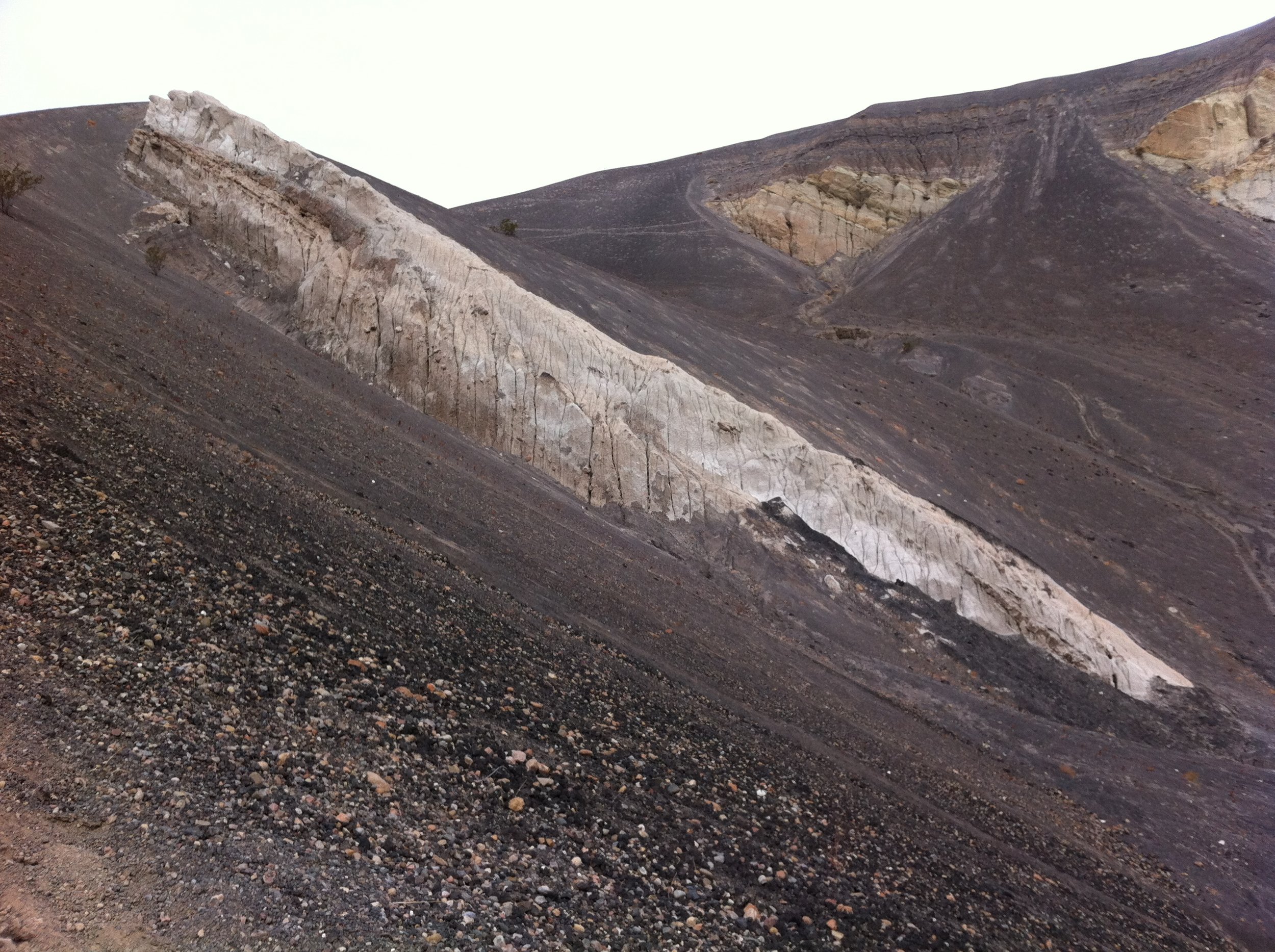
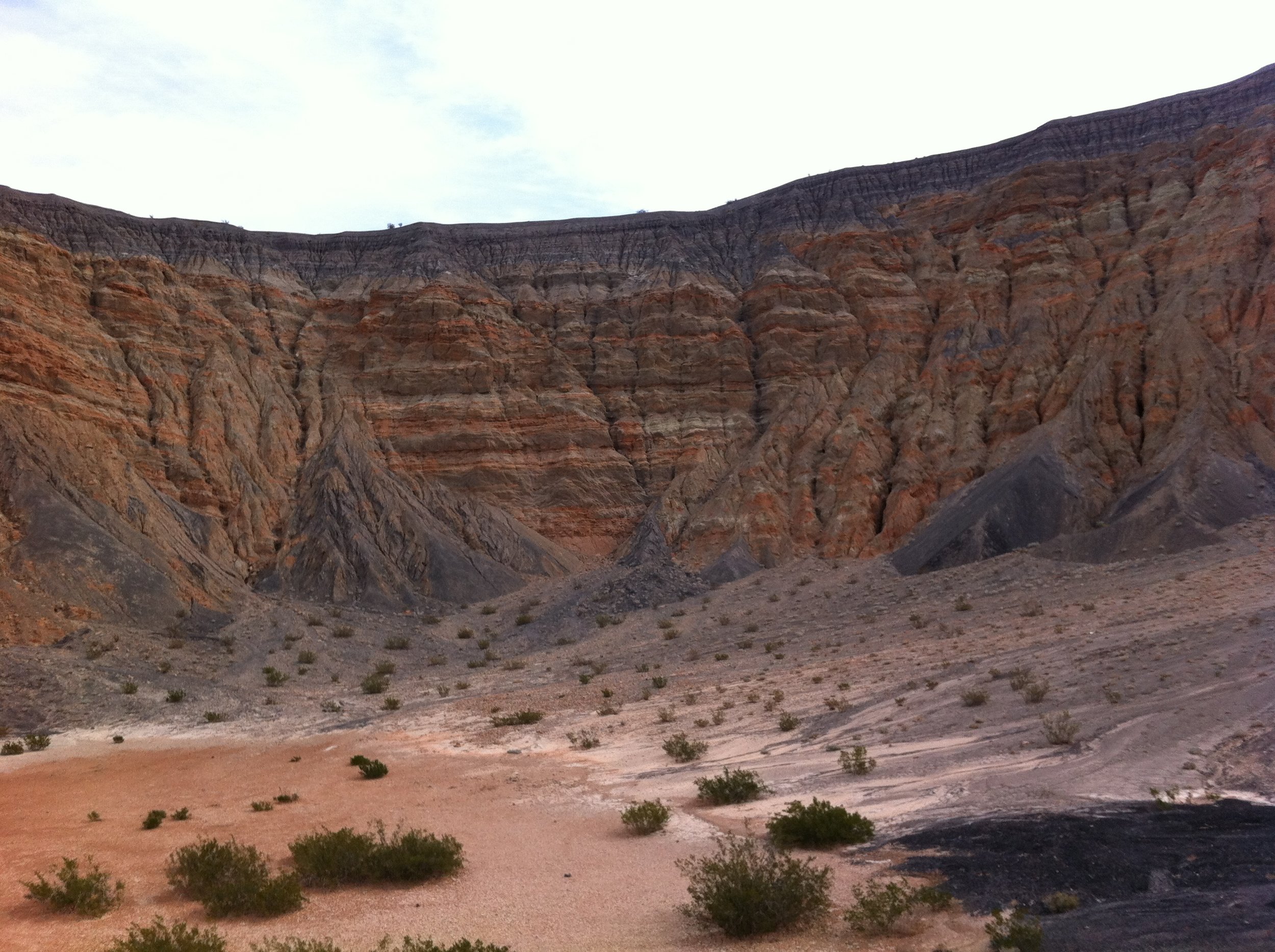

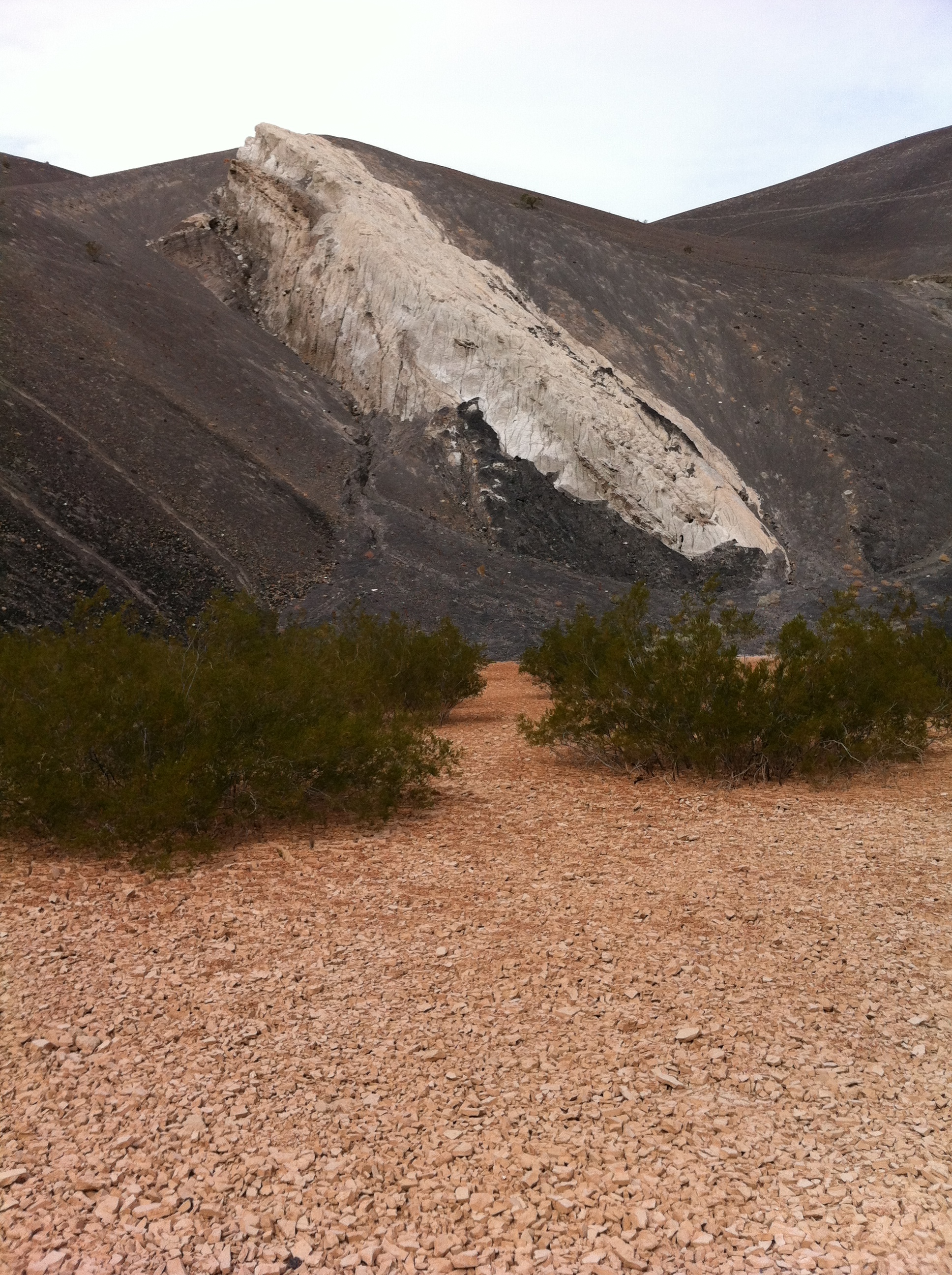
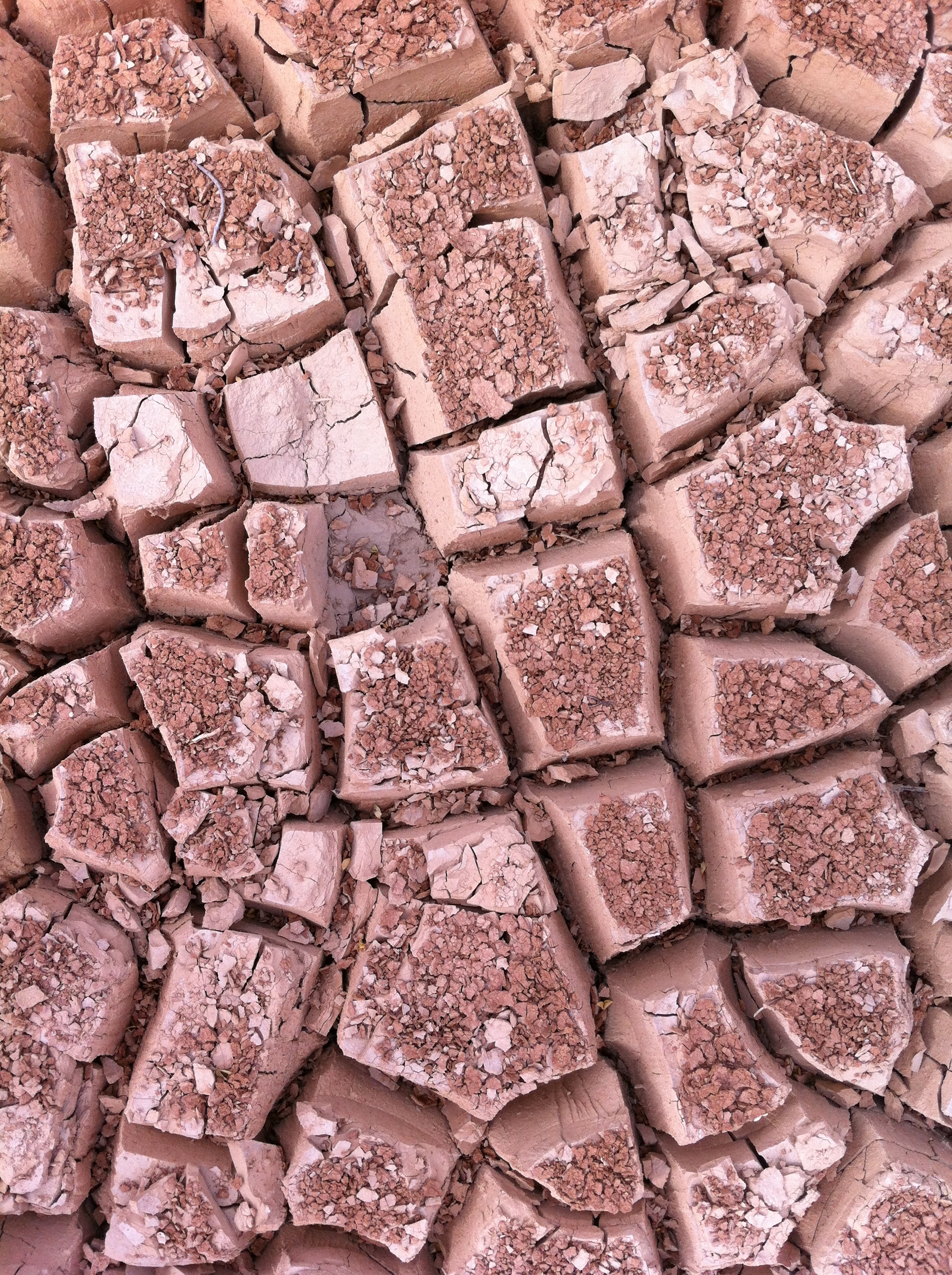
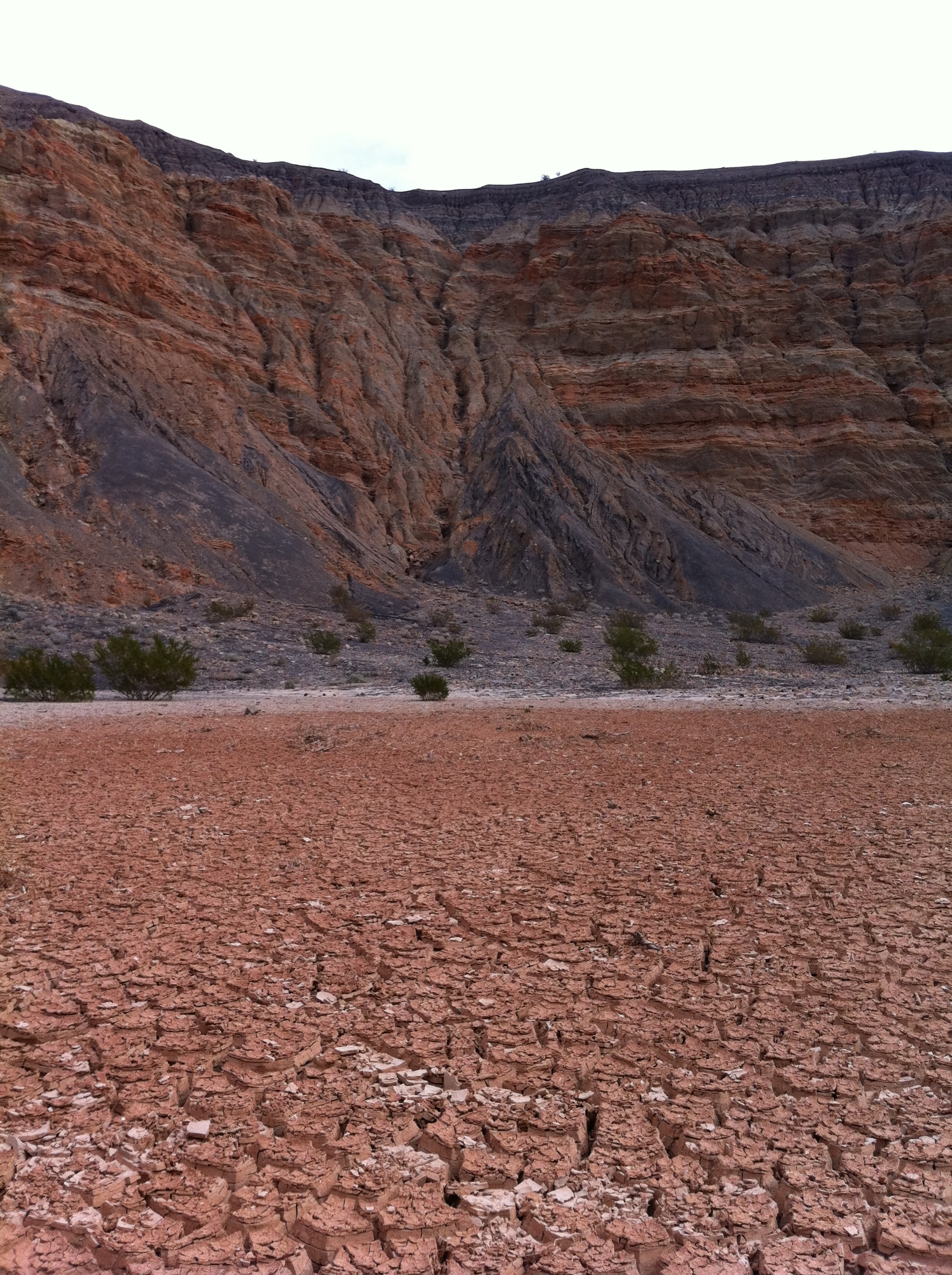

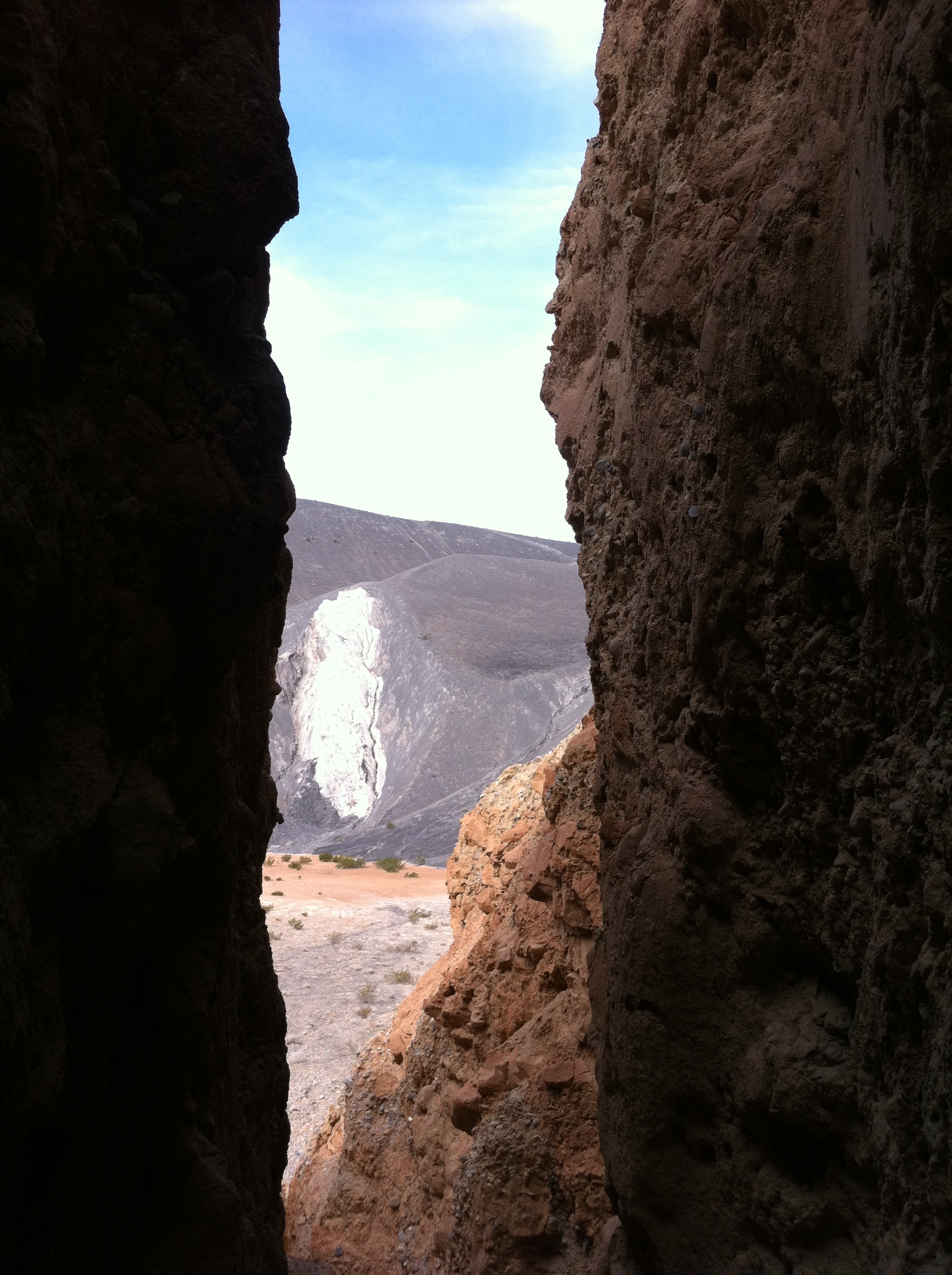


The Ubehebe Crater is one of many volcanoes in Death Valley National Park, and it is a “Maar Volcano” in that it was created by a giant steam and gas explosion that occurred when hot magma from the Earth’s core reached a pocket of ground water. When this occurred, the intense heat immediately flashed the water into steam, which then expanded until the pressure was released by a fairly large bang. If you’re into rocks, as I am, this is a sort of geologic two-for-one opportunity in that you get to go into a volcanic crater of a maar volcano – not something that happens every day! As for the amount of risk, well, while the volcano has not erupted for at least three hundred years, there is no magma underneath the area presently, so the risk is probably minimal, at best.
Directions:Ubehebe Crater is located five miles North of the Grapevine Visitor Center to Death Valley National Park, and the way to the crater is well signed. Even if there were no helpful NPS signs, you would know that you were approaching the crater when you started to pass through large expanses of black cinder fields that look like the surface of the moon. At the middle of the NPS loop road there is a parking area, and interpretive panels regarding the crater. At the interpretive panels, you will likely meet a number of people who have a number of theories about the crater – one time I was told that it was the result of a meteorite strike; another time, I was told that the NPS Panels were incorrect due to a creationist perspective, but since you have read this article, you will be prepared to impress people with your knowledge that the crater is a Maar volcano. Once you are done discussing the particulars of the crater with friends and or total strangers, you will have to decide whether you are a crater walker, or a rim-walker-watcher-of-crater-walkers.
If you’re the latter class of people, I don’t have much to say other than the standard, “enjoy the view”. If you’re a crater walker, here’s what I have to say: the way to the bottom of the crater is very easy. In fact, it is so easy; you will feel like you are sliding. This is, in fact, because you are likely sliding. You will be traveling over loose volcanic rock and scree which naturally wants to obey the force of gravity, and wants to help you obey the force of gravity by coming to rest at the lowest point, the crater floor. Even though the crater is 600-770 feet deep, you will traverse this distance quickly, and I suspect you will find yourself at the bottom within ten to fifteen minutes. Once you are at the bottom, there’s plenty of things to explore – more volcanic rocks, and the cracked dry surface of many evaporated seasonal lakes. If you’re feeling daring, you can head into the alluvial tunnels on the Eastern side as well, although from what I could find, none extend back very far, and all would appear not to be very stable.
Once you are done at the crater bottom, you will look up and marvel at how tiny the non-crater explorers still sitting on the rim looking at you appear. Similarly, they will be marveling at how tiny you look at the bottom. At that point, you will realize that you have a very steep climb back to the rim. This is the point where distance factors in: whether you believe it or not, you will have likely only gone .25 (1/4) to .50 (1/2) miles to the bottom of the crater. What that means is that you have .25-.50 miles to ascend over 500 feet of vertical terrain. To add insult to injury, while the scree helped you going down, it will now hinder you going up. At times on the ascent it will feel like you are walking through quicksand. It is precisely for this reason that I will call the hike moderate: no matter how good of shape you are in, you will work to get out of the crater. It is also worth noting that when you reach the top, you will feel an enormous sense of accomplishment; however, the non-crater walkers will not want to share it with you, as they likely thought you were crazy to attempt the hike in the first place. Although it may not seem like it, this hike is only a half-mile to mile roundtrip!
Tips: Take plenty of water. Even on a cold day, you will work up a sweat coming out of the crater. On a hot day, you may emerge completely soaking wet. Know your limits; pace yourself, and do not attempt the climb in triple digit heat at a world setting pace.
See you in the crater!







